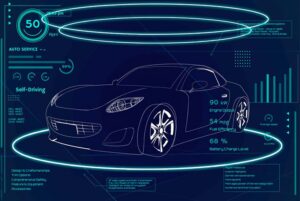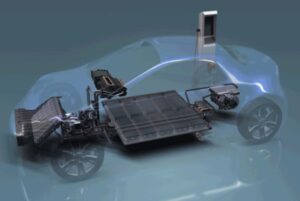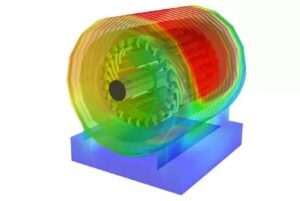 Electrification of the transportation system is a major step towards driving a green economy.
Electrification of the transportation system is a major step towards driving a green economy.
Under the growing consumer concerns and awareness, an unprecedented demand for efficient, environmentally friendly transportation has emerged in the current market that necessitate radical innovation to be successful.
Companies betting on those innovations will eventually reap big benefits, but it all depends on making the right technology decisions at the right moment.
Electric Vehicle (EV) Simulation is the key to crack this quandary and realizing the benefits of electrification in the long run.
Talking more about EV Simulation and its Use Cases, designing an electric vehicle is a complex process wherein engineers need to balance performance and energy efficiency by choosing the right energy storage technology while minimizing powertrain losses.
These critical tasks require EV Simulation of the physical system throughout its development cycle to obtain tested results starting from selecting a powertrain architecture to testing the embedded software.
Top 5 Use Cases for EV Simulation
Giving out a brief introduction on some of the Top 5 Uses Cases for EV Simulation, the list includes,
Balancing Electromagnetic and Mechanical Requirements
 The development lifecycle of electrical machines has many requirements.
The development lifecycle of electrical machines has many requirements.
On one hand, the machine has to match the electrical requirements for the torque and power and on the other, the rotor has to possess a certain durability, wherein the centrifugal force is the major load for the rotor.
Balancing dual requirements is a challenging task as they are sometimes at odds.
One way to do so efficiently is to simulate all of the load cases covering the requirements, especially in EVs. EV Simulation plays a major role in accelerating this arduous design process.
Many industrial simulation programs are designed like a black box, however, COMSOL Multiphysics is unique in its transparency. It enables users to view as well as modify the implemented equations, or even add their own.
Software is designed as a multiphysics tool from the start, enabling users to simulate different physical fields simultaneously. The user can then, combine different physical fields to do something completely new.
However, analyzing complex physical problems like these is hard, even for a simulation expert. Therefore, tools like Simulink and MATLAB play a key role in EV Simulation.
Modeling Batteries and Develop Building Management Systems (BMS)
Accurate battery modeling is significant for developing batteries and BMS for EVs’ diverse charge-discharge and environmental conditions.
Leveraging EV Simulation tools like MATLAB and Simulink, the designer can take advantage of the following capabilities:
- Modeling and simulating batteries for the development of BMS.
- Use equivalent circuits to model batteries and thereby boost their fidelity together with elaborate circuit topologies.
- Simulating thermal effects, non-linearities, battery degradation, and SOC/SOH.
- Developing BMS, including automatic code generation, control logic, and closed-loop simulation for certification workflows and AUTOSAR.
- Incorporating key BMS functionalities, like thermal and overcharge protection, voltage and temperature monitoring, and cell balancing and isolation.
- Enabling accurate battery modeling and BMS development, leading to improved performance and longevity of EV batteries.
Designing Traction Motors, Model Inverters, and Motor Control Software
 Accuracy in modeling motors can make frontloading the motor and motor control units (MCU) design possible before hardware testing. Using EV Simulation tools like MATLAB and Simulink, designers can,
Accuracy in modeling motors can make frontloading the motor and motor control units (MCU) design possible before hardware testing. Using EV Simulation tools like MATLAB and Simulink, designers can,
- Model and simulate power electronics, motors, and MCUs at the desired level of fidelity, ranging from system level to control and motor design levels.
- Design, simulate, and verify power conversion systems leveraging pre-built model libraries of power semiconductors, energy sources, and machines like PMSM (permanent magnet synchronous motors) and IM (induction motors).
- Develop MCUs using intuitive blocks for automated tuning of PID controllers, developing and tuning field-oriented control, closed-loop simulations, and automatic code generation.
EV Simulation list include HIL (Hardware-in-the-Loop) testing and support for certification workflows and AUTOSAR.
Optimize Vehicle-Level Performance
EV systems are generally developed by several different teams.
For instance, the mechanical drivetrain and electrical motors are selected by separate teams of engineers and then produced by different manufacturers.
Braking system algorithms are typically developed by control engineers, while the master cylinder, valves, and pumps are developed by hydraulics engineers. For optimal vehicle performance, there should be consistency across these independently developed systems.
EV Simulation lets us verify that brake caliper pressure, battery capacity, and motor power requirements are in ranges that permit smooth acceleration and deceleration.
Tune Regenerative Braking Algorithms
 A major perk of EVs is their ability to recapture kinetic energy and store it directly in the battery.
A major perk of EVs is their ability to recapture kinetic energy and store it directly in the battery.
To maximize the efficiency of this process, the driveline, power converters, and battery design requires coordination with the battery management algorithm.
In serial regenerative braking, both the regenerative brakes and the conventional brakes are operational at the same time, and a control algorithm is required to ensure smooth deceleration. This is where EV Simulation comes into play.
For example, Simulink models of control algorithms can get connected to Simscape models of brake-by-wire systems, having hydraulic systems and electric motors to generate torque during braking.
Designers can tune both systems to balance requirements for passenger safety and comfort and to maximize the vehicle’s range.
